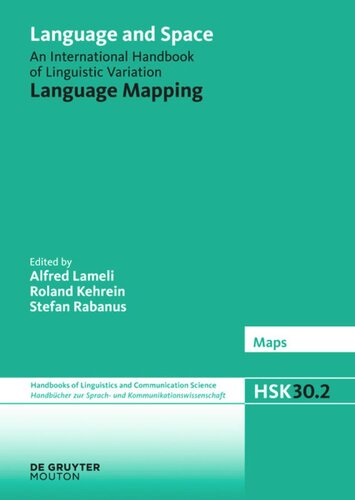

Most ebook files are in PDF format, so you can easily read them using various software such as Foxit Reader or directly on the Google Chrome browser.
Some ebook files are released by publishers in other formats such as .awz, .mobi, .epub, .fb2, etc. You may need to install specific software to read these formats on mobile/PC, such as Calibre.
Please read the tutorial at this link: https://ebookbell.com/faq
We offer FREE conversion to the popular formats you request; however, this may take some time. Therefore, right after payment, please email us, and we will try to provide the service as quickly as possible.
For some exceptional file formats or broken links (if any), please refrain from opening any disputes. Instead, email us first, and we will try to assist within a maximum of 6 hours.
EbookBell Team

4.1
30 reviewsThis handbook is concerned with the cartographic representation of linguistic facts. Even though there is a strong tradition of cartographic work within linguistics, to date there has been no comprehensive introduction to the topic. This is astonishing when one considers that linguistic cartography is part of a tradition clearly reaching back over more than a century. One reason might be that mapping, i.e., the making of cartographic representations, is something of a secondary concern for linguists compared to core topics such as grammar. However, for any linguist engaged in work on the spatial distribution of languages and dialects, linguistic maps represent a highly relevant, if not the most important, means of visualizing and analyzing data. Hence it is no accident that countless, and not just recent, linguistic projects have been devoted to the creation of linguistic atlases, that is, in fairly general terms, to the collection of maps. Classical mapping techniques have recently become dependent on computer technologies and hence on the internet; indeed, some atlases are now only online available. In the light of both this lack of manuals and basic descriptions of linguistic mapping techniques and of recent developments in linguistic geography, this handbook sets out to provide insights into cartographic practice.